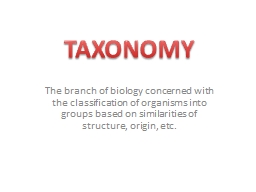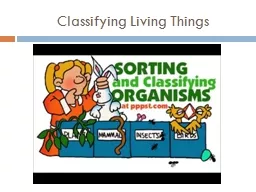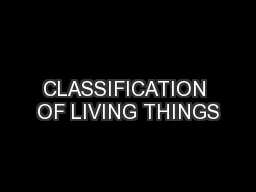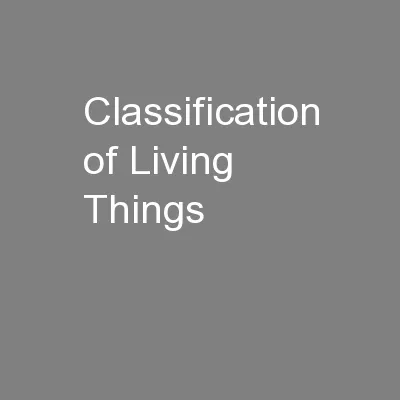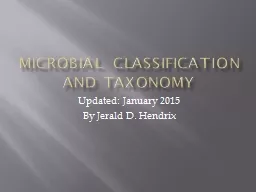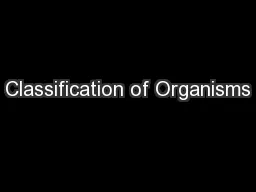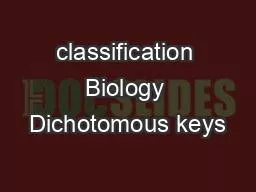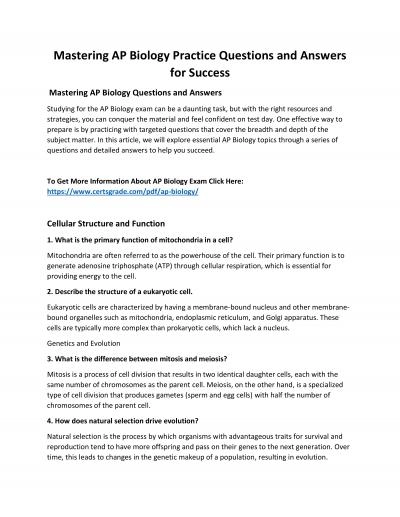PPT-T he branch of biology concerned with the classification of organisms into groups based
Author : felicity | Published Date : 2023-09-23
etc TAXONOMY Why classify things Organize Categorize Order Supermarkets Linneaus 1750 Grouped living things by their PHYSICAL TRAITS
Presentation Embed Code
Download Presentation
Download Presentation The PPT/PDF document "T he branch of biology concerned with t..." is the property of its rightful owner. Permission is granted to download and print the materials on this website for personal, non-commercial use only, and to display it on your personal computer provided you do not modify the materials and that you retain all copyright notices contained in the materials. By downloading content from our website, you accept the terms of this agreement.
T he branch of biology concerned with the classification of organisms into groups based: Transcript
Download Rules Of Document
"T he branch of biology concerned with the classification of organisms into groups based"The content belongs to its owner. You may download and print it for personal use, without modification, and keep all copyright notices. By downloading, you agree to these terms.
Related Documents

